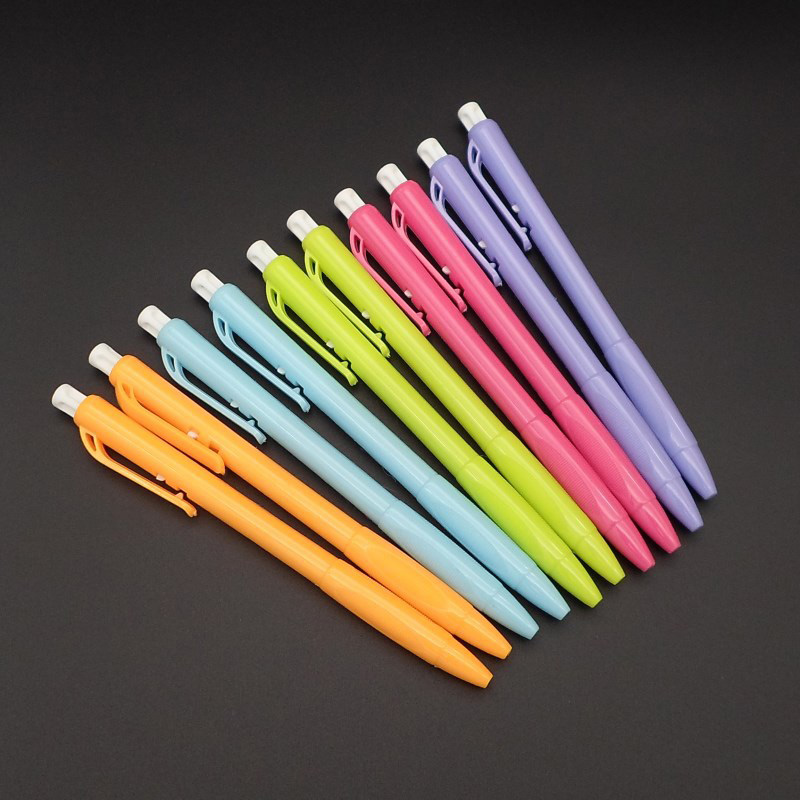Despite the proliferation of digital devices and smart styluses, the ballpoint pen remains one of the universally trusted tools for everyday writing. Known for its adaptability, convenience, and long-lasting ink, the ballpoint pen has evolved from a basic office supply to a versatile instrument used across industries, artistic disciplines, and even non-traditional materials. Today, manufacturers are pushing innovation further by enhancing ink performance, expanding pen functionality, and addressing sustainability concerns—securing the ballpoint’s place in a modern, fast-paced world.
Expanding Beyond Paper: A Pen for Every Surface
Unlike many writing tools limited to paper, ballpoint pens excel across multiple surfaces, including cardboard, glossy packaging, plastic wraps, fabric tags, and coated documents. This adaptability has made them indispensable in logistics, manufacturing, retail, and healthcare—where clear, reliable writing is required in fast-moving environments.
For example, warehouse staff use ballpoint pens to label boxes on the go, nurses write on wristbands and plastic patient charts, and retailers depend on their ability to sign or annotate glossy receipts and packaging. Even artists have adopted ballpoints for detailed sketching on everything from canvas to leather, appreciating the smooth glide and shading control offered by the oil-based ink.
This multi-surface performance sets ballpoint pens apart from many ink-heavy alternatives that may smear, fade, or refuse to write on non-porous materials.
Office and Academic Staples That Endure
In offices and classrooms alike, ballpoint pens remain irreplaceable. Their consistent ink flow, long writing life, and minimal maintenance make them a go-to choice for writing notes, drafting documents, signing forms, and completing exams.
The ink’s quick-drying properties reduce smudging, which is especially beneficial for left-handed writers and those working at speed. In contrast to fountain or gel pens, ballpoints don’t require regular refilling or special storage—making them a practical solution for high-use environments.

According to office supply retailers, ballpoint pens still represent a substantial share of bulk stationery purchases by schools, government agencies, and corporations—underscoring their role as daily-use essentials.
Durable Ink, Longer Lifespan
A key driver of ballpoint popularity is its long-lasting, oil-based ink. Compared to other pen types, ballpoints can write significantly more before needing replacement. This longevity makes them both cost-effective and ideal for high-volume tasks such as journaling, data logging, or completing paperwork in busy professional settings.
Modern ballpoint inks are being further refined to ensure deeper color saturation, smoother line consistency, and reduced clogging. Some manufacturers have introduced hybrid inks that blend ballpoint durability with gel-like glide—providing a smoother writing experience without sacrificing ink longevity.
There is also a growing trend toward waterproof and fade-resistant inks, ensuring that notes and signatures remain intact even in adverse conditions—a crucial feature in legal, archival, or outdoor applications.
Aesthetic and Ergonomic Evolutions
Today’s ballpoint pens are not just functional—they’re stylish and ergonomic, appealing to a wide spectrum of users. From budget-friendly disposables to sleek executive models, pen makers are offering an array of designs that balance comfort with visual appeal.
Brands are experimenting with rubberized grips, contoured barrels, and weighted tips to reduce hand fatigue and improve control during extended writing sessions. Limited-edition designs, customizable barrels, and metallic finishes have also helped position ballpoint pens as thoughtful gifts and professional accessories.
This blend of form and function ensures that ballpoints aren’t just used—they’re chosen.
Sustainability: A Growing Priority
With global attention turning toward environmental responsibility, the ballpoint pen industry is taking steps to reduce waste and promote sustainable production. Refillable ballpoint models are gaining traction, particularly in schools and offices aiming to minimize plastic consumption.
Several manufacturers now produce pens made from recycled plastics, biodegradable casings, or sustainable materials like bamboo and kraft paper. Eco-labeling, refillable ink cartridges, and recyclable packaging have become strong selling points, especially among younger and environmentally conscious consumers.
Ballpoint refills are also becoming more standardized and widely available, encouraging users to extend the life of their pens rather than replacing them entirely.